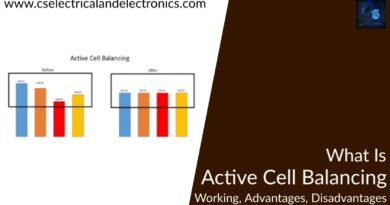What Is SDLC, Software Development Life Cycle, Working Steps
Hello guys, welcome back to our blog. Here in this article, we will discuss what is SDLC, the software development life cycle, the steps of the software development life cycle, and some important SDLC models followed in the market.
If you have any electrical, electronics, and computer science doubts, then ask questions. You can also catch me on Instagram – CS Electrical & Electronics.
Also, read:
- Top 12 Tech Parks In The World, Best Tech Parks For Engineers
- Top 100 Software Companies In The World To Work
- Top 15 Device Driver Development Companies In The World
What Is SDLC, Software Development Life Cycle
The software industry uses the Software Development Life Cycle (SDLC) method to plan, create, and test high-quality software. The goal of the SDLC is to create high-quality software that meets or exceeds customer expectations while finishing on schedule and under budget.
- The term “Software Development Life Cycle” is an abbreviation.
- The process is also known as software development.
- The SDLC is a framework that outlines the duties carried out at each stage of the software development cycle.
- An international standard for software life-cycle procedures is ISO/IEC 12207. It seeks to serve as the benchmark for all activities involved in creating and maintaining software.
Within a software corporation, the SDLC is a method used for software projects. It comprises a thorough plan outlining how to create, maintain, replace, and modify or improve particular software. The life cycle outlines a methodology for enhancing both the general software development process and the quality of the final product.

01. Planning and requirement analysis comprise Stage 1
In the SDLC, the requirement analysis stage is the most crucial and vital. With input from the customer, the sales department, market surveys, and domain specialists in the business, it is carried out by the senior members of the team. The fundamental project approach is then planned using this data, and a product feasibility assessment is then carried out in the financial, operational, and technological domains.
During the planning stage, it is also done to identify project risks and plan for the requirements for quality assurance. The technical feasibility study’s conclusion defines the numerous technical strategies that can be used to carry out the project successfully and with the fewest possible risks.
02. Defining Requirements at Stage 2
Following completion of the requirement study, the next stage is to precisely describe and record the product needs and obtain customer or market analyst approval. An SRS (Software Requirement Specification) document, which includes all the product requirements to be planned and produced throughout the project life cycle, is used to do this.
03. Designing the product architecture is stage 3
SRS serves as a guide for product architects as they create the optimum architecture for a new product. Usually, more than one design approach for the product architecture is proposed and documented in a DDS – Design Document Specification – based on the requirements specified in the SRS.
All significant stakeholders review this DDS, and the best design strategy is chosen for the product based on a number of factors, including risk analysis, product robustness, design modularity, budgetary considerations, and time constraints.
A design strategy precisely defines each product’s architectural modules, as well as how the modules communicate and portray data flow with external and third-party modules (if any). All of the modules in the suggested architecture should have their internal designs meticulously detailed in DDS.
04. Building or Developing the Product at Stage 4
During this phase of the SDLC, the product is actually developed and built. At this point, the programming code is generated in accordance with DDS. Code generation can be completed quickly if the design is done in a detailed and organized manner.
Programming tools including compilers, interpreters, debuggers, and other similar tools are used to generate the code, and developers must adhere to the coding standards established by their business. Different high-level programming languages are used for coding, including C, C++, Pascal, Java, and PHP. The sort of software being produced affects the choice of programming language.
05. Testing the Product at Stage 5
Since testing activities are typically included in all stages of the SDLC in contemporary SDLC models, this stage is typically a subset of all the stages. However, this stage only refers to the product’s testing phase, during which product flaws are discovered, tracked, corrected, and retested until the product satisfies the SRS’s quality requirements.
06. Stage 6: Market deployment and maintenance
The product is formally released in the relevant market once it has undergone testing and is prepared for deployment. Depending on the organization’s business plan, product deployment may occasionally take place in phases. The product could be tested in a real business environment before being made available to a larger market.
The product may then be released as is or with suggested improvements in the target market segment depending on the feedback. After a product is put on the market, maintenance is carried out for the clientele already in place.
Software Development Life Cycle Models
There are several established and created software development life cycle models that are used in the software development process. Software Development Process Models are another name for these models. To ensure success in the software development process, each process model adheres to a set of specific steps that are specific to its kind.
The industry’s most significant and well-liked SDLC models are listed below:
- Iterative Model,
- Waterfall Model,
- Big Bang Model,
- Spiral Model, and
- V-Model
The agile Model, RAD Model, and prototyping models are more similar approaches.
01. Iterative Model:
In the iterative approach, the procedure iteratively improves the evolving versions until the entire system is developed and prepared for deployment. It begins with a rudimentary implementation of a limited set of software requirements.
It is not the goal of an iterative life cycle model, to begin with, a complete set of criteria. Instead, only a portion of the software is specified and implemented in the beginning, and then it is reviewed to find any additional requirements. After each iteration of the model, this process is repeated to create a new version of the software.
02. Waterfall Model:
The first Process Model to be introduced was the Waterfall Model. The term “linear-sequential life cycle model” is also used to describe it. It is incredibly easy to use and comprehend. There is no overlap between phases in a waterfall model; each step must be finished before the subsequent phase can start.
The first SDLC methodology for software development was the waterfall model.
The software development process is depicted using the waterfall model, which follows a linear sequential flow. This implies that a phase of development can only start if the one before it is finished. The phases in this waterfall model do not cross over.
03. Bing Bang Model:
We don’t adhere to any set procedure while using the Big Bang model, which is an SDLC model. Simply defined, development begins with the necessary resources as the input, and the result is software that may or may not meet customer requirements. This Big Bang Model does not adhere to a process or technique, and very little planning is necessary. Even if the customer is unsure of his exact expectations, therefore they are done quickly and without much thought.
This model is typically used for small projects with tiny development teams.
04. Spiral Model:
The waterfall model’s methodical, managed elements are combined with the idea of iterative development in the spiral model. Iterative and sequential linear development models, or the waterfall model, are combined to create the spiral model, which places a strong emphasis on risk analysis. Each iteration around the spiral enables incremental product releases or incremental product improvement.
05. V-Model:
The V-model is an SDLC framework where processes are executed sequentially in a V-shape. The Verification and Validation Model is another name for it.
A testing phase is linked to each corresponding development stage in the V-Model, which is an extension of the waterfall model. This implies that there is a testing phase that is directly related to each and every phase of the development cycle. This is a very structured model, and the start of the subsequent phase only occurs after the conclusion of the previous phase.
06. Agile Model:
The agile software development life cycle (SDLC) model combines iterative and incremental process models with a focus on process adaptability and customer satisfaction through the quick delivery of functional software. The product is divided into smaller incremental builds using agile methods. Iterations of these builds are supplied. Usually, an iteration lasts between one and three weeks. Cross-functional teams work simultaneously on several different topics during each iteration, including,
- Planning
- Requirements Analysis
- Design
- Coding
- Unit Testing and
- Acceptance Testing
A functional product is presented to the client and other significant stakeholders at the conclusion of the iteration.
07. Rapid Application Development:
Without any precise planning, the RAD (Rapid Application Development) paradigm is built on prototyping and iterative development. The preparation needed to create the product is done throughout the software development process itself.
Rapid Application Development emphasizes gathering customer requirements through focus groups or workshops, early customer testing of prototypes using an iterative concept, reuse of existing prototypes (components), continuous integration, and quick delivery.
08. Software Prototyping:
Building software application prototypes that demonstrate the capabilities of the product under development but may not really contain the exact logic of the original software is referred to as software prototyping.
Because it makes it possible to comprehend customer requirements at an early stage of development, software prototyping is growing in popularity as a method of developing software. It helps gather insightful customer feedback and enlightens software designers and developers as to what precisely is expected from the product under development.
This was about “What Is SDLC, Software Development Life Cycle“. I hope this article may help you all a lot. Thank you for reading.
Also, read:
- 100+ C Programming Projects With Source Code, Coding Projects Ideas
- 1000+ Interview Questions On Java, Java Interview Questions, Freshers
- App Developers, Skills, Job Profiles, Scope, Companies, Salary
- Applications Of Artificial Intelligence (AI) In Renewable Energy
- Applications Of Artificial Intelligence, AI Applications, What Is AI
- Applications Of Data Structures And Algorithms In The Real World
- Array Operations In Data Structure And Algorithms Using C Programming
- Artificial Intelligence Scope, Companies, Salary, Roles, Jobs
Author Profile
- Chetu
- Interest's ~ Engineering | Entrepreneurship | Politics | History | Travelling | Content Writing | Technology | Cooking
Latest entries
 All PostsApril 19, 2024What Is Vector CANoe Tool, Why It Is Used In The Automotive Industry
All PostsApril 19, 2024What Is Vector CANoe Tool, Why It Is Used In The Automotive Industry All PostsApril 13, 2024What Is TCM, Transmission Control Module, Working, Purpose,
All PostsApril 13, 2024What Is TCM, Transmission Control Module, Working, Purpose, All PostsApril 12, 2024Top 100 HiL hardware in loop Interview Questions With Answers For Engineers
All PostsApril 12, 2024Top 100 HiL hardware in loop Interview Questions With Answers For Engineers All PostsMarch 22, 2024Driver Monitoring Systems In Vehicles, Working, Driver Sleepy Alert
All PostsMarch 22, 2024Driver Monitoring Systems In Vehicles, Working, Driver Sleepy Alert








